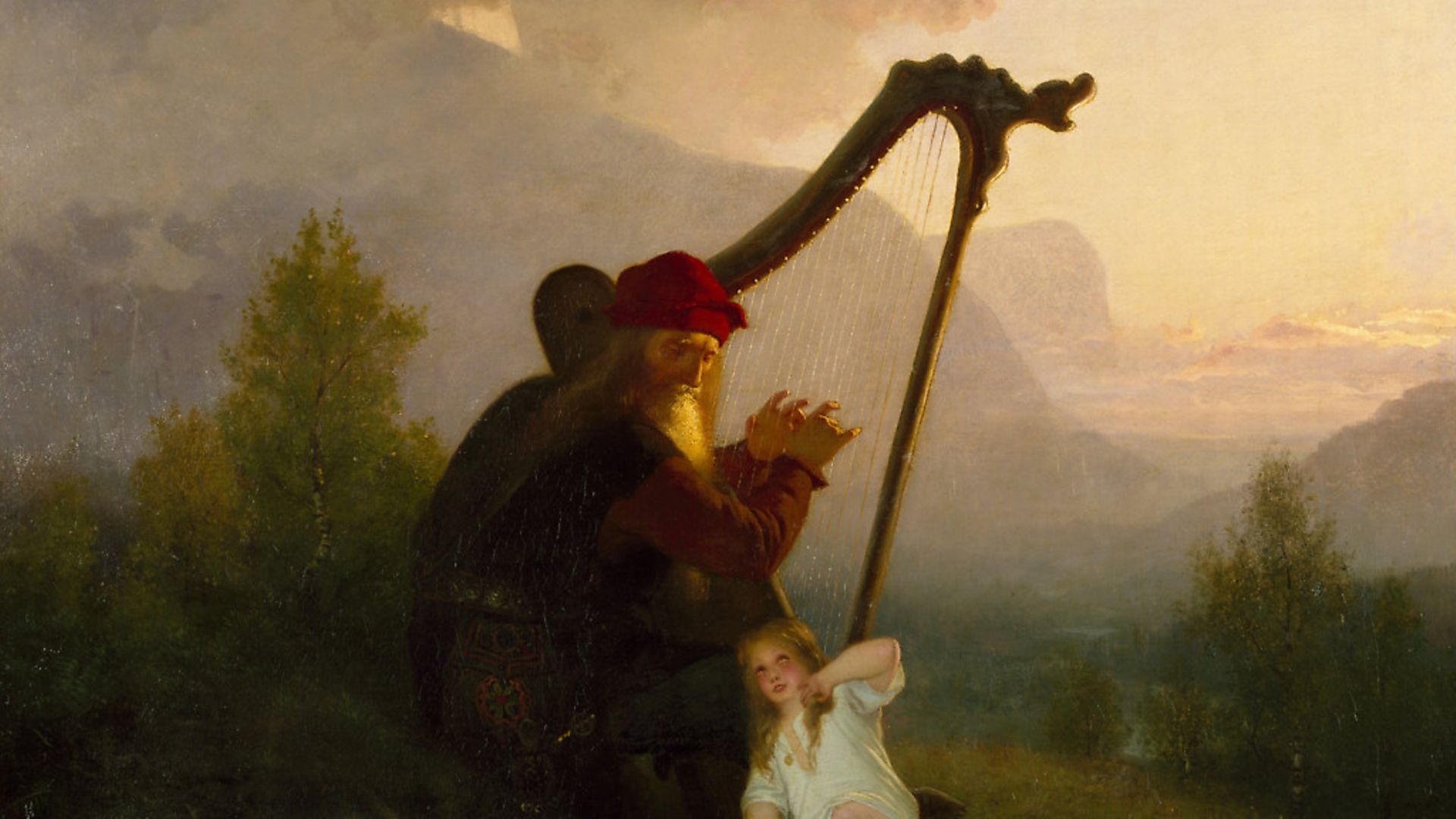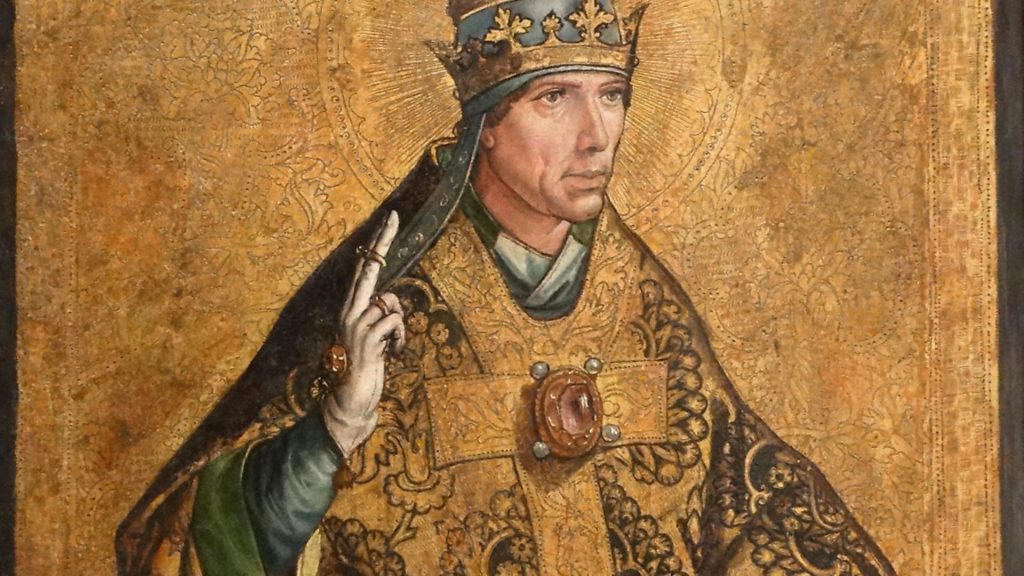
SOPHIA DEBOICK looks back at a significant moment in British history as a new musical culture started to take shape on these shores.

Antiquity was being left behind and the Middle Ages beginning. After the fall of Rome, the world was turned upside down as Germanic tribes migrated across Europe and the international links established under the empire were severed.
There was population decline, a loss of literacy, and the world became a more uncertain and dangerous place. But as cultures became more localised, they also thrived, and while this was a period later branded the Dark Ages, the late 6th and early 7th centuries produced wonders of art and music that cut through the darkness.
Pope Gregory the Great was a byword for musical inspiration even in his own century. When Pope Honorius I died in 638, his epitaph compared him to Gregory as being “Divino in carmine pollens” – ‘Gifted with divine harmony’. Son of a Roman senator, Gregory had a top-notch legal education but threw it all away to turn the family mansion into a monastery, go on to found several others and give much of his wealth away to the poor.
He became a monk in 574, but Pope Benedict I recognised his talent and he occupied various high offices of the Church before being elected pope in 590. He was far from keen on becoming pontiff and pleaded with emperor Maurice to withhold his consent for the appointment, to no avail. But his philanthropic instincts immediately kicked in as he organised relief efforts for the population of a plague-stricken Rome and he was soon making waves both inside the Church and out. A great organiser, he revolutionised the governance of Church lands, involved himself in the secular political travails of the Italian peninsula and encouraged the growth of monasticism.
But it is for his contribution to music that Pope Gregory is best known, giving his name to Gregorian chant – the monophonic traditional liturgical music of the Latin rite. However, the extent to which he did anything dramatic with church music is debated. His 9th century biographer, John the Deacon, certainly damned with faint praise when he wrote that Gregory “antiphonarium centonem compilavit” (‘compiled a patchwork antiphonary’ – a collection of chants for Mass and the liturgy performed at set times throughout the day), and it seems that Gregory was indeed a collector and codifier of the pre-existing forms of plainsong rather than an innovator.
Gathering chants from the different regions of Christendom, his aim was to organise them into a set form for the use of the whole of the Church, and Gregory II, pope between 715-731, may have had a stronger hand in creating Gregorian chant as it is known today. Yet, in his collecting activities and giving a definite form to the Schola Cantorum – the idea of having trained singers, not just the clergy and congregation, performing church music – Gregory the Great made vital contributions to the music of the Church.
In 600 Britain was a place of small-time princes and a melting pot of influences from northern Europe, as Germanic tribes had already come over the Channel and the Angles and Saxons had made a new society. By 600 Pope Gregory had sent Saint Augustine the Lesser to do what hymn-writing, monastery-founding Saint Columba had already achieved in Scotland and evangelise England. Gregory had been impressed by some Anglo-Saxons he had seen on sale in the slave market in Rome and felt these people worthy of conversion – the 8th century Whitby Abbey Vita Gregorii would accordingly eulogise him as “the apostle of the English”.
Augustine landed at Ebbsfleet with 40 monks in 597 at a time when Kent was the most powerful of the Anglo-Saxon kingdoms. Ethelbert, king of Kent, was baptised in 601, and Augustine would oversee the building of the first cathedral at Canterbury, becoming the first archbishop there. Between the twin forces of a flourishing of Anglo-Saxon culture and the reestablishment of Christianity, this was a time in which the foundations of Britain as we know it were laid, and musical culture too was blossoming.
While the Anglo-Saxons used a range of instruments, from horns and other wind instruments made of bone or wood to organs, the most striking surviving physical evidence of musical culture from this early period is the intricately made lyres that have been excavated across Europe. The early 7th century Sutton Hoo ship burial included a six-stringed lyre, found in the form of wooden fragments, including the tuning pegs, and two ornate metal escutcheons. The wood even bore traces of the beaver-fur bag it had been buried in.
The 7th century Taplow Prince, excavated in Buckinghamshire in 1883, also had a lyre among his grave goods, and along with the example from Oberflacht, southern Germany, these were until recently the only three surviving examples of lyres from this period (two others were destroyed during the war, one in the Allied bombing of Cologne, the other when Russian soldiers drank the alcohol from the jar its fragments were preserved in a Berlin museum). But in 2003 a further example was found near an Aldi supermarket in Essex. The late 6th century tomb of the Prittlewell Prince, otherwise known as ‘the King of Bling’, was possibly that of king Sæberht of Essex, the first East Saxon king to have been converted to Christianity (gold foil crosses were found at the site), or his brother, Saexa, and fragments of wood and metal fittings preserved in their original positions in the grave gave the best idea yet of the shape of the Anglo-Saxon lyre. In a detail that proves the reach and richness of the Anglo-Saxon kingdoms, the instrument was decorated with garnets from India. Here was a high-status item indeed, and the link of such instruments to royalty continues in the written sources.
Beowulf, the Old English epic poem composed in the early 8th century, painted a vivid picture of feasting at royal mead-halls of this time, with the ‘harp’ (hearpan or hearpe – probably in fact a lyre, rather than the kind of triangular harp that appeared in a slightly later period) as a constant accompaniment. It is the “noise of revelry loud in the hall… the harmony of the harp, the sweet song of the poet” that enrages the demon Grendel to violence, and music’s absence is used to signify deep sorrow, as when Hrethel – king of the Geats and Beowulf’s grandfather – mourns the death of his sons: “There is not sound of harp, revelry in the courts, such as long ago there was.”
Other 8th century sources confirm the deep association of music with merrymaking, with the Vespasian Psalter showing the Old Testament’s King David in contemporary guise, playing a lyre and surrounded by men clapping and playing horns, while Bede’s Ecclesiastical History of the English People (c. 730) described song-accompanied feasting going on in Anglo-Saxon monasteries in the story of the first known English poet Cædmon (until he got his miraculous poetic gift, he “had never learned anything of versifying; and for this reason sometimes at a banquet, when it was agreed to make merry by singing in turn, if he saw the harp come towards him, he would rise up from table and go out”).
Above all, in Beowulf, music signifies light over darkness, civilization over barbarity, and life over death, as is seen at the bloody conclusion of the poem: “Not at all the sound of harp to wake the warrior, but the black raven… telling the eagle, how he succeeded in eating… the slain.”
For the Jews, too, music was representative of survival. With the destruction of the Second Temple in 70 AD and the expulsion of the Israelites there was a loss of a huge amount of Jewish musical culture, and the liturgy remained uncodified for a thousand years.
Yet, music was such a key part of Jewish culture, appearing throughout the Old Testament, from the Song of Deborah, to King David writing the psalms, and the large orchestra at Solomon’s Temple, it could hardly be erased, and music endured as part of personal prayer. But by perhaps as early as the 6th century written notation for cantillation – the musical system for chanting texts from the Bible – was being developed by the Masoretes, Jewish scribe-scholars working in Palestine and Iraq. They gave each word in the Bible a cantillation mark, which indicated how it should be sung.
At the same time, another contribution to the musical life of the synagogue was also being made by poets writing piyyutim, poetry for the prayer service, which were given musical settings. When, in 614, thousands of Jewish rebels rose up against the occupying Christian Byzantines and joined Persian forces in the ongoing Byzantine-Sasanian War to briefly take Jerusalem, it was only a short-lived moment of victory, and music would be one way that the Jewish culture was sustained through centuries of exile.
In 600 Muhammad was perhaps 30 years old and a decade from his first revelation. The spread of Islam in following centuries transformed the world, as did the ongoing rise of Christianity through Rome, Byzantium and the royal dynasties of Europe. But it was in this supposedly dark age of the early part of the second half of the first millennium that the ground was laid for making a new world from the old one.










